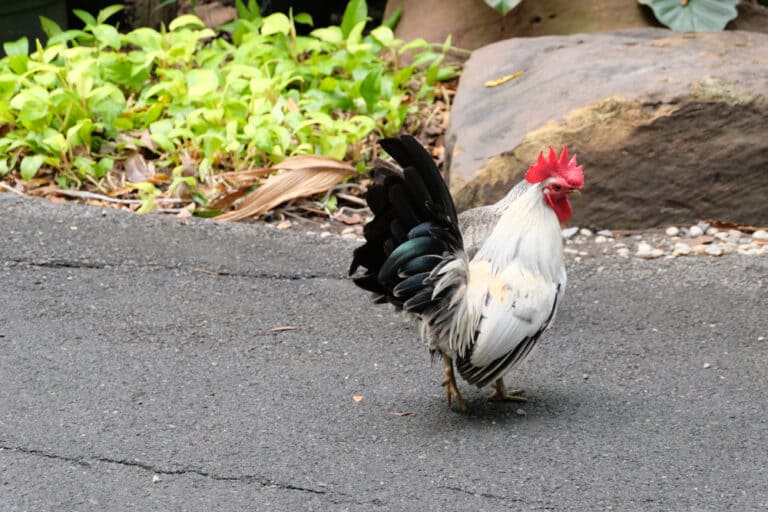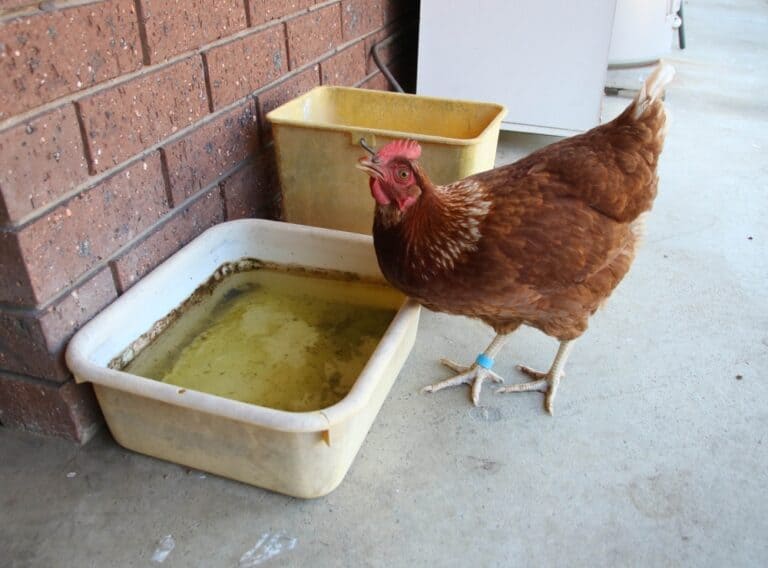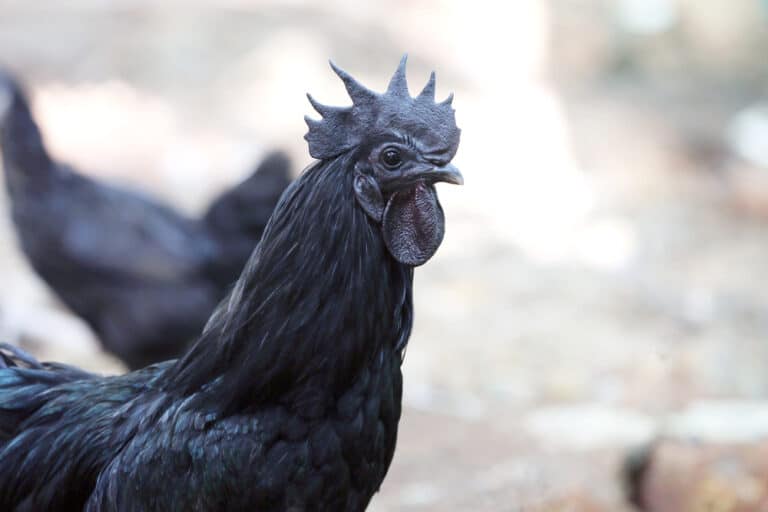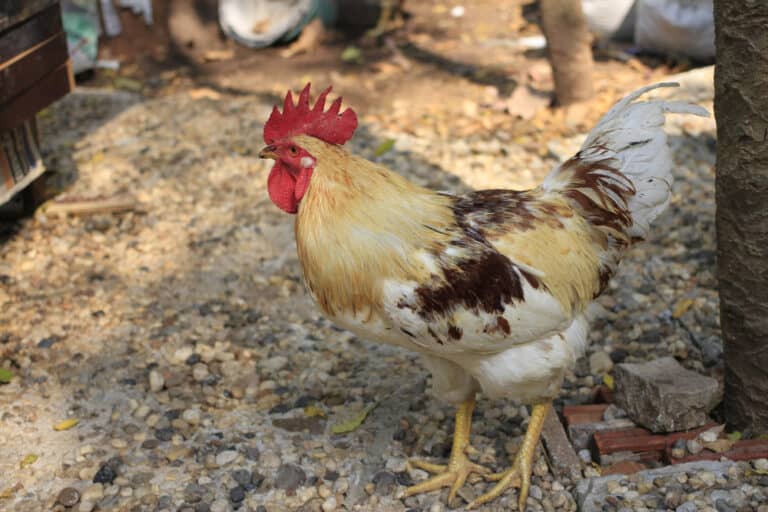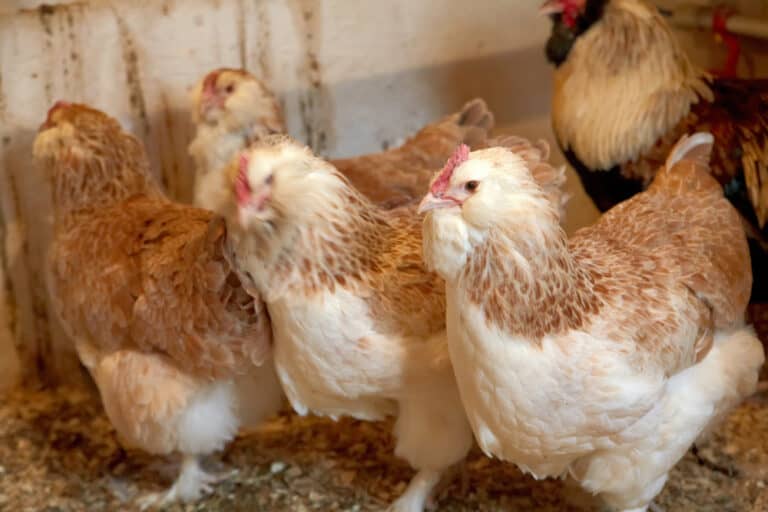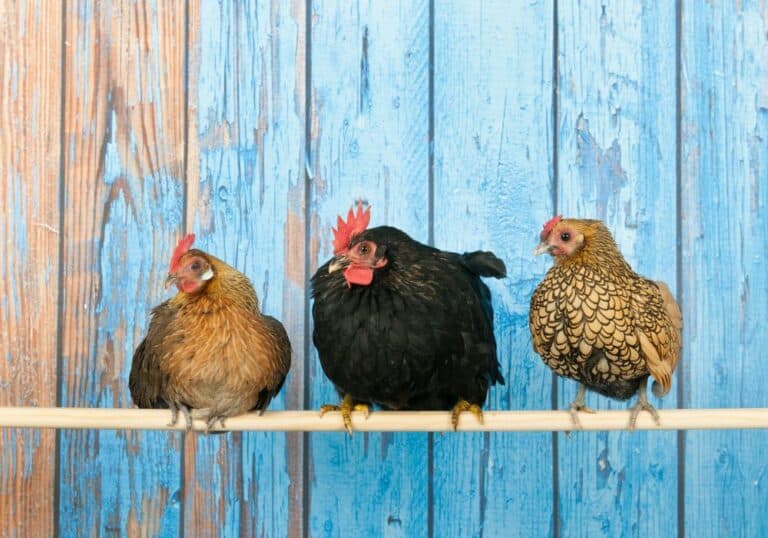Are you looking to add a unique breed of chicken to your flock?
Look no further than the Swedish Black, an extraordinary breed that adds a touch of elegance and mysticism to every homestead.
With its stunning presence and intriguing history, the rare chicken breed is highly sought after by poultry keepers and enthusiasts alike.
But what makes this breed stand out from traditional chicken breeds? Why is it a subject of discussion and curiosity among chicken owners?
We will answer these questions and more in this comprehensive article on the Swedish Black hen. By the end of this piece, you will know the origin, distinctive characteristics, and egg-laying capabilities of this breed.
Let’s get started.
Swedish Black Hen: History
The Swedish Black hen is not your typical chicken breed. As the name suggests, the breed originated from Sweden. The locals even have another name for it–Svart Honas, which translates to black female.
But the breed’s name should not fool you because the Swedish Black chickens are not only female. They have beautiful and sturdy males, too.
Still, on the history, some poultry enthusiasts believe the breed made its way to Sweden in the 1800s through seamen/sailors who traveled from Mozambique.
Another theory is that the breed might have originated in Indonesia due to its similarity with its cousin, the Ayam Cemani. It’s also possible that the breed came from Norway, where a landrace of exotic black birds flourished.
Although the Swedish Black hen’s origin is shrouded in mystery, one thing is for sure–it’s a super rare chicken breed. According to the National Poultry Census, about 400 Swedish Black chickens exist in their home country.
Because of their rarity, the Swedish government recognized the breed and declared it a national treasure. As a result, the Swedish Association for Landrace Breeds opted to preserve the breed’s genetics in the country’s gene bank in 1990.
This landrace breed entered the United States in 2012, where it became popular because of its unique appearance. But to date, Svart Hona remains rare, even among respected breeders across the US.
Unlike the Ayam Cemani, the American Poultry Association (APA) does not recognize the Swedish Black as a standard breed.
Swedish Black Hen: Appearance
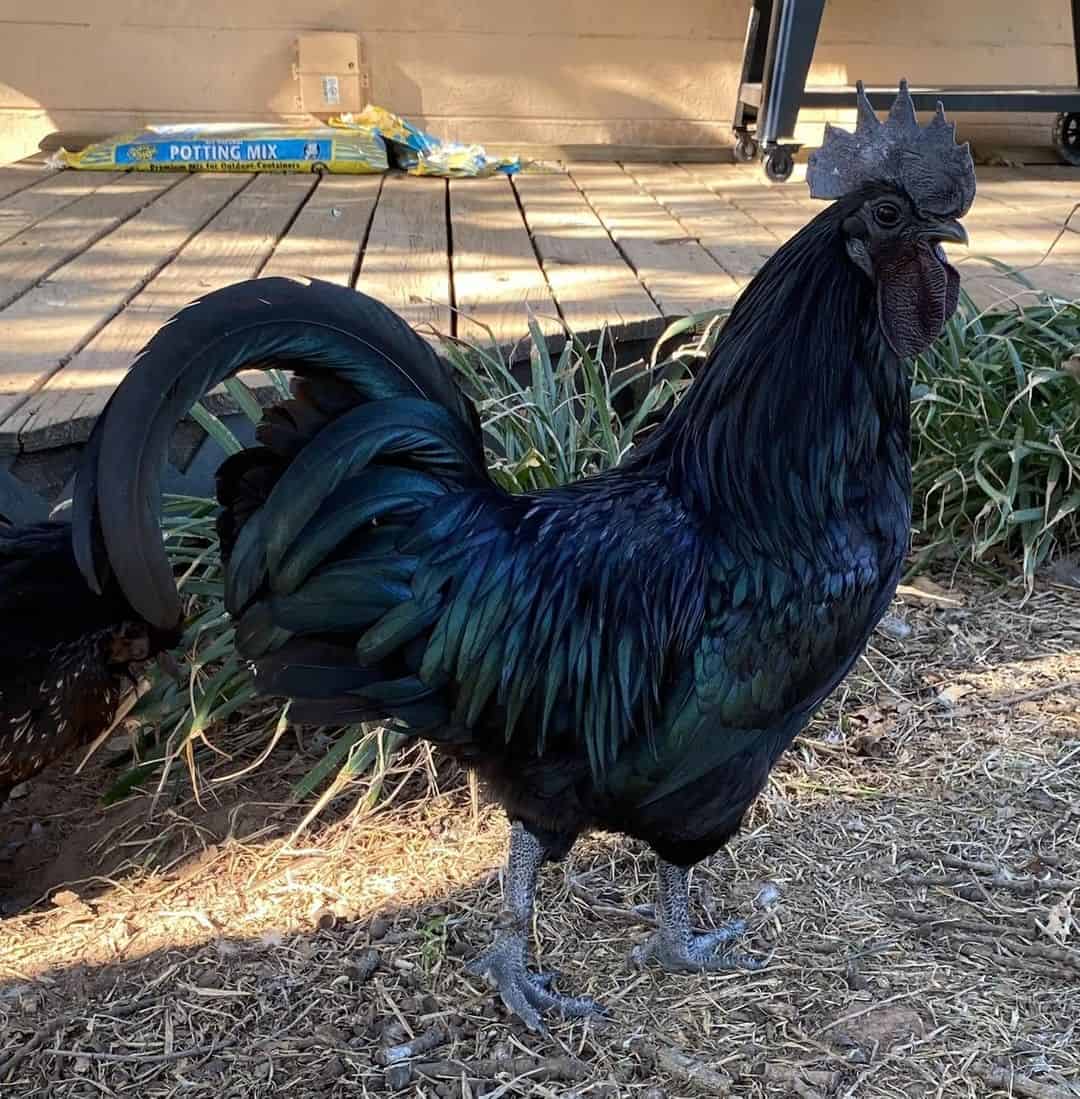
Perhaps the most striking feature of the Swedish Black chickens is the unique black coloration. The all-black appearance occurs due to a genetic mutation called fibromelanosis. This mutation causes the rapid replication of black pigment cells–specifically, the EDN3 gene.
The expression of the EDN3 gene causes black pigment cells to migrate everywhere in the body. Because of this, birds with Fibromelanosis like Swedish Black hens have black feathers, beaks, combs, tongues, toes, and wattles.
Get this, the inside of the chicken breed, including the bones and meat, looks like they’ve been dipped in tar. You might expect such a mutation to have some side effect on the bird’s health. But that’s not the case!
In fact, the dark color of the Svart Honas is what makes them extremely valuable in the eyes of chicken farmers and breeders.
Unlike traditional chicken breeds, the Swedish Black Hen is a lightweight breed. The females weigh around 5 lbs (11.2 kg), while the males can grow up to 7 lbs (15.4kg).
Swedish Black Hen: Personality
Swedish black chickens are known for being calm but not docile unless handled properly. The birds have a serene demeanor that separates them from more high-strung breeds.
Because of their laid-back personality, the hens are easy to interact with and handle. As for the roosters, they are more protective and often tend to the needs of their harem.
Besides, Swedish Black chickens are super intelligent and curious. They learn quickly and easily adapt to new environments and situations. For this reason, they respond well to training and excel in a variety of showmanship activities.
In the social hierarchy, it’s common to find Swedish Black chickens near or at the top of the pecking order.
But if you want the roosters to thrive, provide them with about 10 hens or more. This way, they can fulfill their role as providers and protectors. This setting also matches their instincts and improves their well-being.
Oftentimes, the Swedish Black chickens are short-tempered and will only interact with other members of the flock if a functionally pecking order exists. Fortunately, the dominant cockerel usually keeps the hens from fighting.
Swedish Black Hen: Hardiness

Are the Swedish Black chickens a hardy species?
Well, these birds are sturdy and resilient. They thrive well in cold regions like Sweden’s chilly landscapes. Their high resistance to cold weather ensures they can survive the winter.
Sadly, the black cocks are more susceptible to frost bites because of their prominent, single combs and oval-shaped wattles. To prevent this, homeowners should provide their birds with enough heat.
In hot weather, these chickens require plenty of shade in the summer to avoid heat stress. While visually stunning, their jet-black plumage has some downsides. It absorbs heat during summer, which can bleach the black feathers.
The best way to address these problems is to provide your feathered friends shade, increase ventilation in a chicken coop, and provide them with fresh water. It also helps to know the signs of heat stress in chickens.
On the other hand, Svart Hona chickens don’t like living in a cage. Naturally, they are excellent foragers and love to explore their surroundings.
Uses of the Swedish Black Hen
While they are considered ornamental birds, these birds have impressive egg production and meat abilities.
Swedish black hens can lay approximately 250 eggs per year. Their eggs usually have a creamy white color.
These birds consistently produce eggs throughout the year, even during winter. It seems like low daylight hours during winter have little to no effect on their egg production. Because of this, this breed makes a great addition to backyard flocks and commercial operations.
Furthermore, these hens naturally become broody and make good mothers. However, Svart Hona chicks mature slowly; you can expect them to start laying eggs at around 24 weeks.
In addition to tasty eggs, this breed produces flavorful dark meat, known for its succulence and tenderness. The black-colored meat also introduces depth and richness in soups and roasted dishes.
Qualities Checks to Consider Before Buying the Swedish Black Hen
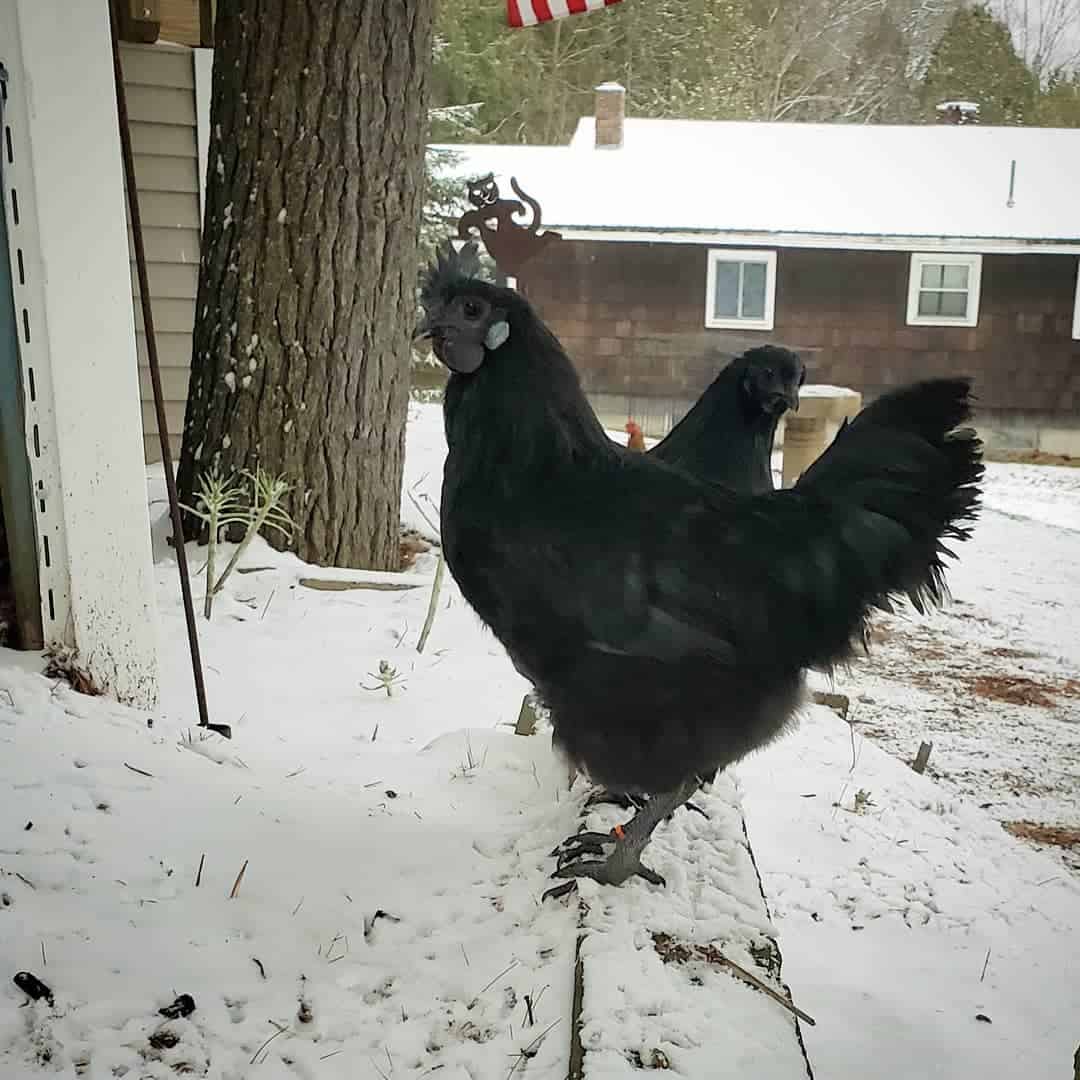
Before purchasing a Swedish Black Hen, it’s critical to consider certain quality features that define this breed. These include:
- Color: The Swedish Black Hen is well-known for its striking all-black plumage. Their feathers are beautiful and have a consistent black tone from head to toe, distinguishing them from other breeds.
- Comb: Examine the comb atop the hen’s head. The Swedish Black Hen has a single comb with five distinct points, which add to its aesthetic appeal and uniqueness.
- Legs and Toes: The breed has featherless legs and toes. This unique feature adds to their appearance and distinguishes them from breeds with feathered legs.
- Toes: Count them! Swedish Black Hens are known for having an extra toe, totaling five instead of the usual four toes.
- Body: The Swedish Black Hen has a compact and well-proportioned body. Their body shape is visually appealing and allows for agility and graceful movements.
- Legs: This chicken breed has sturdy, medium-length legs that are well-suited to their active foraging lifestyle.
- Eyes: Upon close examination of the hen’s eyes, you will notice prominent eyes. They are large and expressive and add dimension to their appearance.
- Tail: The Swedish Black hen’s bottom is known for its perfectly angled and well-formed shape. The tail feathers align beautifully, adding to the breed’s elegance and aesthetic appeal.
How To Effectively Care for Swedish Black Hens
- Provide your flock with comfortable housing and spaces: We’ve already established that the Swedish black chicken enjoys foraging and appreciates outdoor spaces. Therefore, provide them with secure and spacious enclosures to roam comfortably. Also, include shelter from adverse weather conditions, and sufficient perches and nesting boxes.
- Take care of your birds: Taking care of Swedish Black hens involves providing them with a balanced and nutritious diet to ensure they stay healthy. Also, supplement their diet with fresh vegetables, fruits, and treats, such as mealworms for additional nutrients. Aside from food, offer them suitable bedding, like wood shavings or straws. And ensure you regularly clean the henhouse to avoid waste buildup and parasite infestation.
- Foster social interactions: Swedish Black chickens are social creatures, who enjoy companionship. So, raise them with flock members from other breeds to encourage interactions. You should also spend some time with them to build trust and form strong bonds.
- Regular Health Checkups: Conduct health checkups frequently to identify and address health-related issues on time and prevent future infections and diseases. Be on the lookout for odd behaviors, abnormalities in appearance, and reduced egg production.
- Have Some Patience: Svart Hona baby chicks like taking their time in the egg, thus, you might need to help them hatch. And since this breed is not genetically modified for egg or meat production, don’t expect it to mature faster like other hybrid chicken breeds.
Conclusion
As we wrap up, we can’t help but be captivated by the aesthetic appeal, resilience, and egg-production abilities of the Swedish black hen.
This breed showcases a blend of intelligence, sociability, and calmness, which makes it an ideal choice for chicken owners seeking a delightful and engaging companion.
Additionally, Swedish Black chickens are hardy, sturdy, and highly adaptable. With the right housing conditions and nutrition, they can thrive in cold and hot regions.
Unfortunately, the number of these ancient birds is declining and they might be at risk of extinction. Because of this, it’s vital to recognize and protect the uniqueness and genetic diversity of Swedish Black chickens.
By doing so, our future generation will continue to be awestruck with the allure and grace of this rare jewel.
That marks the end of our piece. Do you have any questions? Tell us in the comment section!

